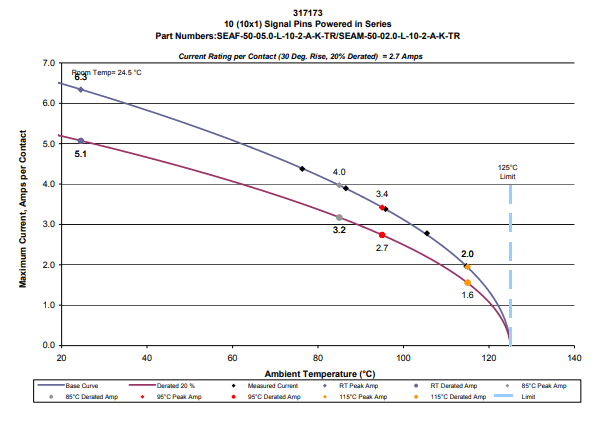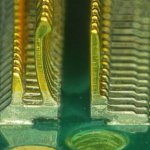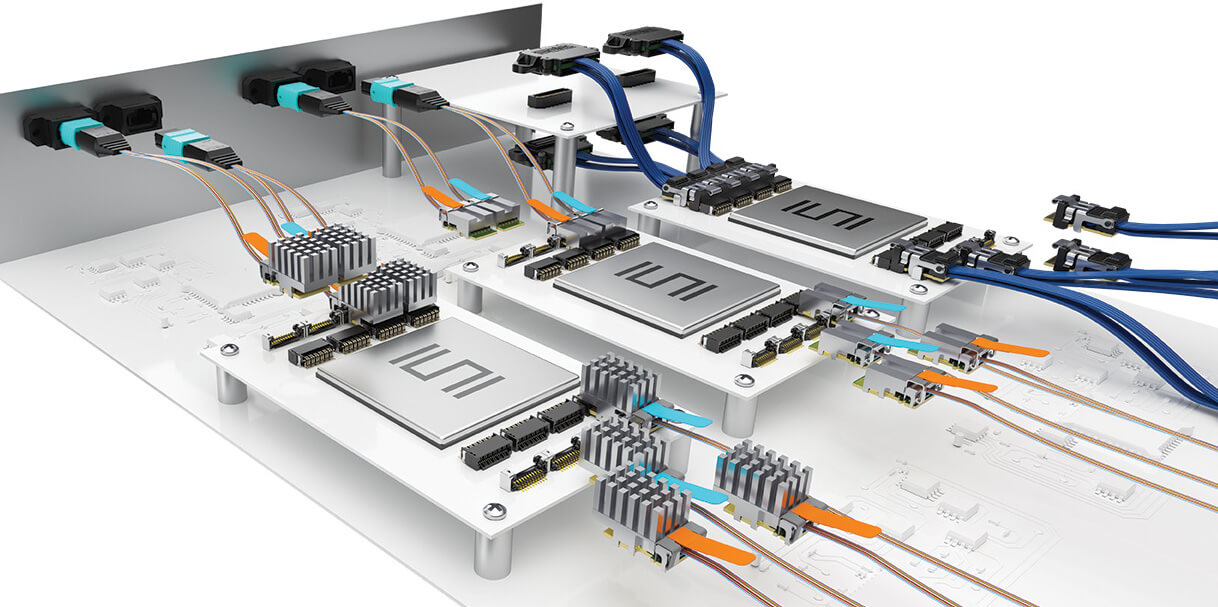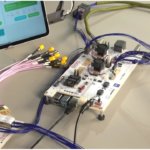Temperatures are falling near the Samtec headquarters in Southern Indiana. Winter is upon us and we wish that the sun’s radiation heating would be a bit more efficient this time of year. Other heat transfer methods we wish were more efficient in the connector world are convection and conduction cooling around electronic systems. Most interconnects we deal with are passive and don’t actively generate heat on their own but they can play a critical role in the thermal management of the system as a whole.
We have noticed more and more emphasis lately at tradeshows like OCP, OFC, and Super Computing around Thermal Management. We would like to share how we are looking at thermal management and ways that you can enhance your system.


Picking the Right Component
This may be the most basic way to prevent some issues in your system design. Make sure that the connector you are choosing can handle the fully powered system. The cross-sectional area of the contacts or the wire gauge may be your limiting factor. As new chips are introduced, or as systems are upgraded, the demands on the current generation connector may be too much. Ohm’s Law shows us that increasing the resistance chokes off higher power and creates a hot spot. This is one way that a passive component can contribute to generating heat in the system.

Samtec post Current Carrying Capacity (CCC) on all products as part of our standard Design Verification Test (DVT). You can download the test reports from the product series pages and see very quickly if that connector family will work for you. You can also follow the link above to an article that details how and why we look at CCC.
Samtec Flyover Cables

Moving heat-generating components around in the system is another way to help with Thermal Management. Increasing airflow helps in general but strategically aiming that airflow can make it that much more efficient.
The farther you move component may mean longer trace length in the printed circuit board. This can introduce more loss to the system. You trade off a few degrees of heat for more decibels of loss. You can gain those back by using Samtec’s Flyover cable solutions.
Samtec’s cable has typically 3x the reach compared to a traditional trace in the PCB. Samtec has a very compelling product family that can be placed near the chip, to the front panel, or to the backplane. This flexibility may allow you to rearrange your system to be more efficient without losing signal integrity.
This demonstration showcases two of these series.
Full System Architecture Changes
A much larger leap when it comes to thermal management considerations is to introduce immersion cooling. Samtec has been studying the effects of immersion cooling when it comes to our connectors. Power integrity has the largest impact with a 5x improvement to current carrying capacity mentioned above. Samtec has a landing page found Here that shows some of these results on relevant product families.
This will have adverse effects on some connectors due to replacing the air gaps found inside most interconnects with cooling liquid. This change in the dielectric constant from 1 (air) to around 2.1 (cooling liquid) can change some of the losses through the channel. In many cases there are accommodations that can be made, but as speeds increase these effects may become greater and require specialized interconnects and components.
Other types of interconnects will be less affected like Samtec’s FireFly mid-board optics. This sealed system and conversion to optics create a very appealing immersion cooling option.
Conclusion
Each application and system design will have thermal challenges. Know that Samtec is working on these challenges and has the technical support to make sure we are setting you up for success. This may be through Signal Integrity support, Power Integrity support, or general test reports that puts the right information in your hands when needed.



Leave a Reply